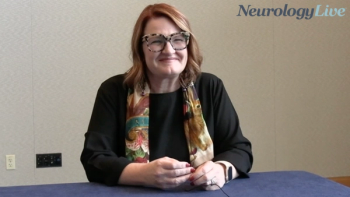
Early Results Show Symptom Gains in First Patient Dosed With UX-DA001 Cell Therapy for Parkinson Disease
Key Takeaways
- UX-DA001 cell therapy showed significant motor and nonmotor symptom improvement in the first trial patient, with reduced daily OFF time and confirmed graft survival.
- The trial uses a dual-layer assessment approach, integrating clinical scores with neuroimaging biomarkers to validate findings and inform go/no-go decisions.
Late breaking data from a phase 1 trial presented at MDS 2025 showed that cell therapy UX-DA001 demonstrated positive efficacy in a woman with moderate-to-advanced Parkinson disease.
Researchers recently presented positive efficacy data from the first patient in an ongoing phase 1 open-label dose-escalation trial (NCT06778265) assessing UX-DA001 (Unixell Biotech), an investigational iPSC-derived autologous cell therapy for the treatment of Parkinson disease (PD), at the
The study’s first participant was a woman with moderate-to-severe PD who, despite taking 4 daily medications for PD before surgery, who continued to experience substantial motor fluctuations and disabling nonmotor symptoms. At 3 months of follow-up, findings revealed that the patient improved by 21 points in the OFF stage (47.7%) and by 8 points in the ON state (42.1%), as measured by Movement Disorders Society Unified PD Rating Scale (MDS-UPDRS) Part III scores.
Led by Liu Jun, MD, professor and director of the Department of Neurology at Ruijin Hospital in China, findings showed that treatment with the cell therapy led to a reduction of 5.33 hours of daily OFF time in the patient case. In addition, researchers observed improvements in nonmotor symptoms such as sleep, anxiety, urinary, and on the 39-Item PD Questionnaire. According to study authors, ¹⁸F-FP-CIT positron emission tomography (PET) confirmed graft survival. In terms of safety, no drug-related adverse events occurred; surgery-related adverse events, including headache, leukocytosis, and dyskinesia, were mild and transient.
"The reduction of UPDRS part III score, indication an improvement in motor function of the first patient, is very encouraging and promising. Furthermore, in addition to the UPDRS scores, which remains the most frequently employed primary endpoint, neuroimaging biomarkers are increasingly recognized as critical outcome measures in PD clinical trials owing to their intrinsic objectivity,” coauthor Zhou Liche, MD, physician in the Department of Neurology at Ruijin Hospital, said in a statement.2
“In this study, we used 18F-FP-CIT PET to measure the density of presynaptic dopamine transporter. The specific binding ratios (SBR) of 18F-FP-CIT directly mirrors nigrostriatal dopaminergic terminal integrity and serial scans revealed an increasing UX-DA001 graft-derived dopaminergic innervation in putmen. By integrating these imaging readouts with UPDRDS-based clinical scores, the trial achieves a dual-layer assessment—subjective functional status is supported by objective biological evidence. This approach strengthens the validation of clinical findings and accelerates go/no-go decisions for cell therapies in PD."
Previous preclinical studies included an efficacy assessment in 6-hydroxydopamine–lesioned SCID mice and GLP-compliant toxicology and tumorigenicity studies in NOG mice. The phase 1 open-label, dose-escalation trial, with the woman from the presented case study, will enroll patients with moderate-to-advanced PD aged 50 to 75 years. Participants in the study will receive bilateral putamen injections of UX-DA001 at either a low dose (0.9 × 10^6 cells/hemisphere) or a high dose (1.8 × 10^6 cells/hemisphere). Authors noted that safety is monitored by an independent committee, and no immunosuppression will be administered in the trial.
In preclinical studies, grafted cells consistently yielded high numbers of in vivo midbrain dopaminergic neurons across batches in the 6-OHDA-lesioned SCID model at 6 months post transplantation. More than 50% of grafted cells expressed dopaminergic markers tyrosine hydroxylase and EN1. Functional recovery was evidenced by normalization of behavioral deficits and restoration of striatal dopamine levels. GLP safety assessments up to 6 months demonstrated no adverse effects, and tumorigenicity studies through 52 weeks revealed no tumor formation or abnormal cellular proliferation.
"The key advantage of UX-DA001 lies in its technology platforms enabling higher target cell proportion and purity. This allows for achieving comparable efficacy with a lower total number of cells injected, consequently shortening the transplantation procedure time and enhancing its reliability and safety,” Zhou said in a statement.1
REFERENCES
1. Jun L, Yuejun C, Dianyou L, et al. First-in-Human Study of Autologous iPSC-Derived Midbrain Dopaminergic Progenitors (UX-DA001) in Parkinson's Disease. Presented at: 2025 MDS Congress; October 5-9; Honolulu, Hawaii. LBA-14.
2. Unixell Biotech reported a case study of UX-DA001, an iPSC-derived autologous cell therapy for Parkinson Diseases at MDS Congress 2025. News release. Unixell Biotech. October 16, 2025. Accessed https://www.prnewswire.com/news-releases/unixell-biotech-reported-a-case-study-of-ux-da001-an-ipsc-derived-autologous-cell-therapy-for-parkinson-diseases-at-mds-congress-2025-302586177.html
Newsletter
Keep your finger on the pulse of neurology—subscribe to NeurologyLive for expert interviews, new data, and breakthrough treatment updates.


































